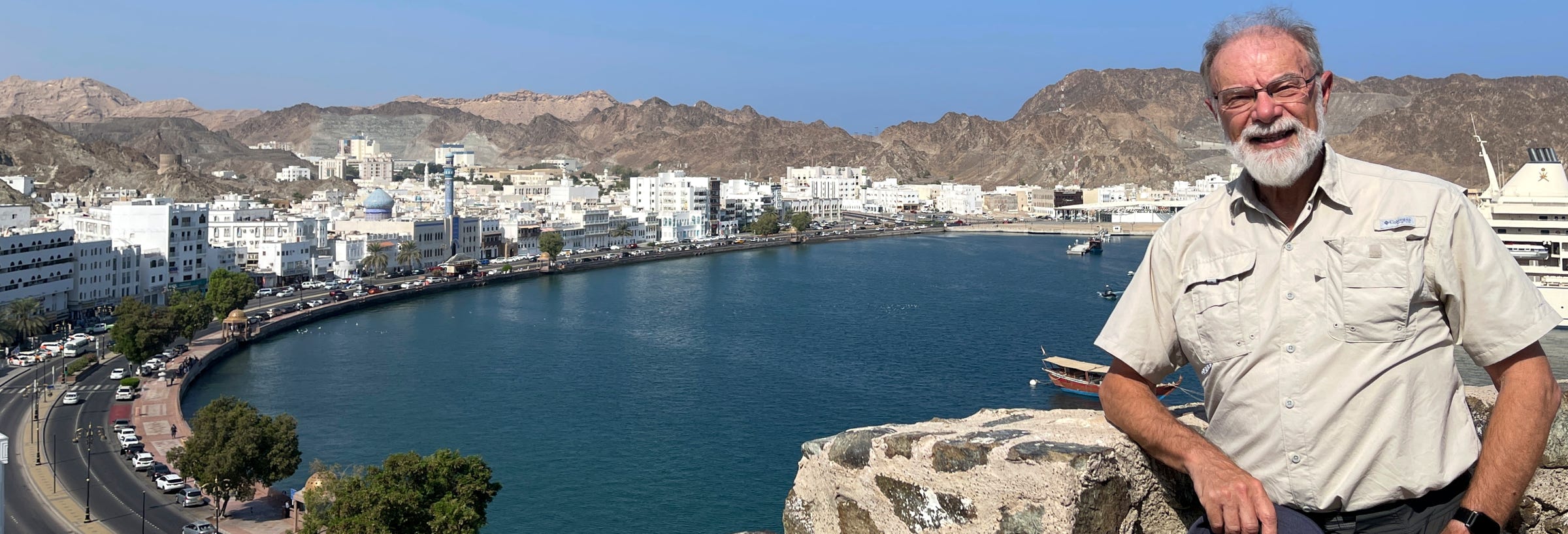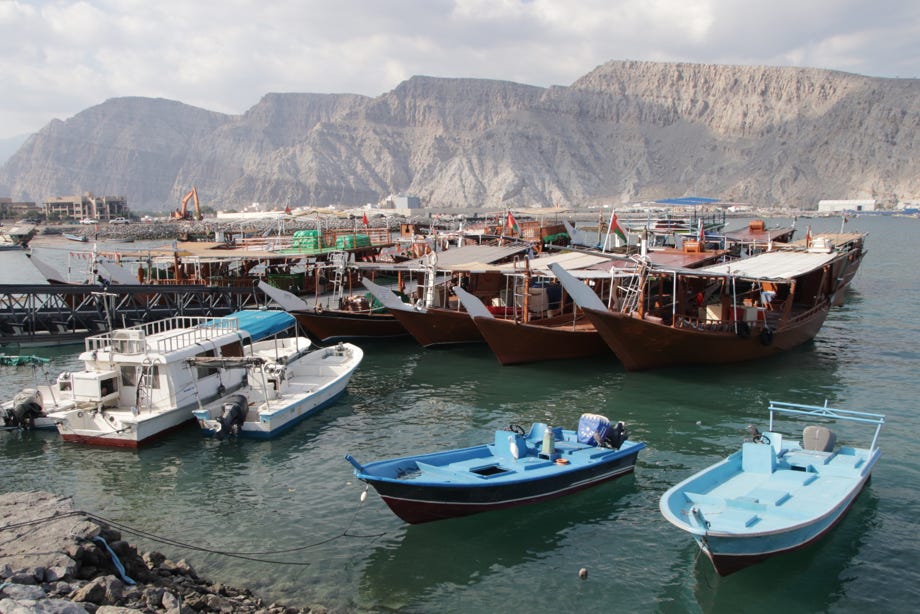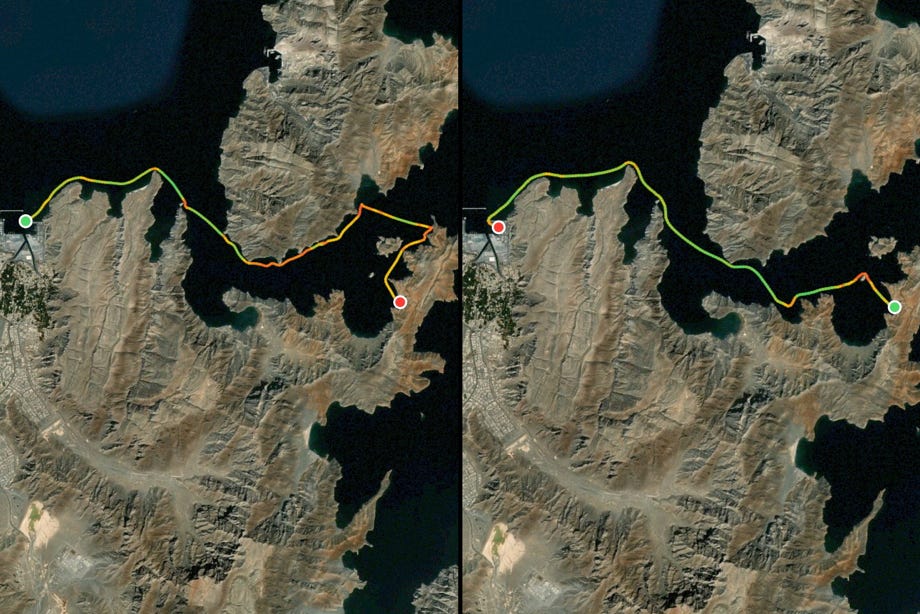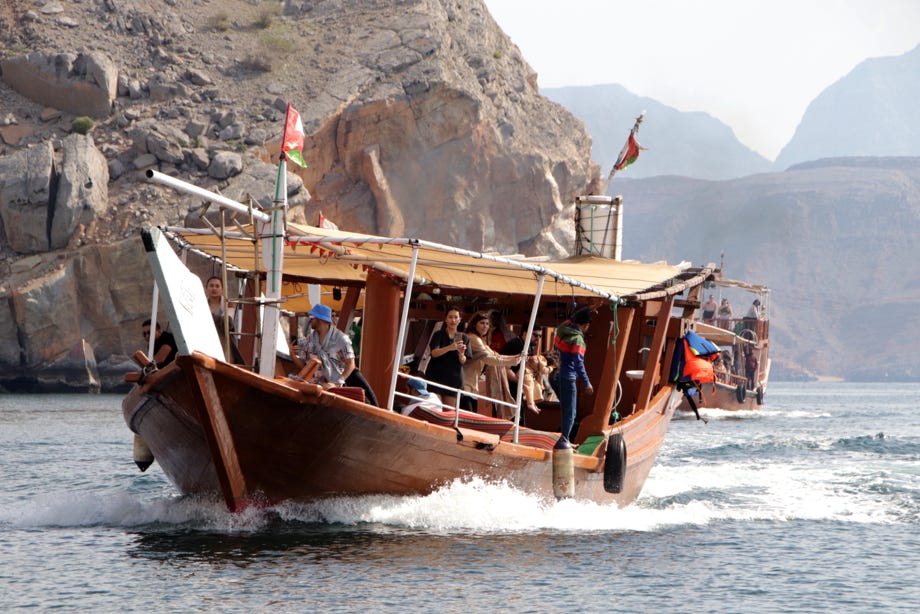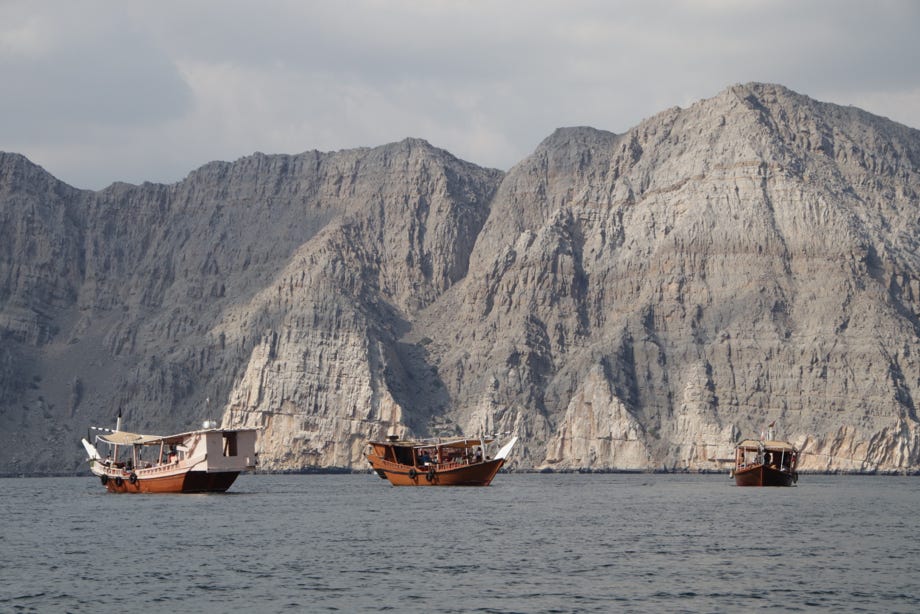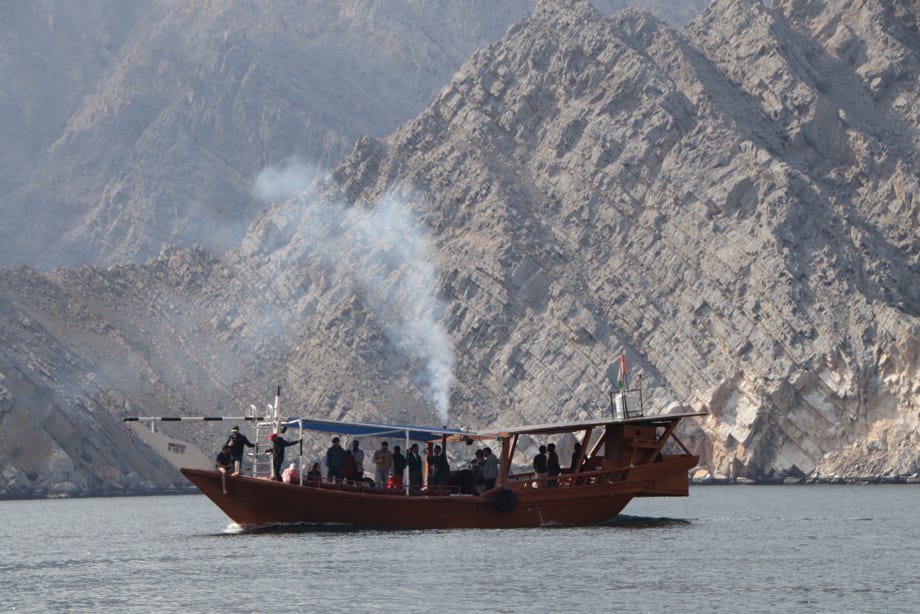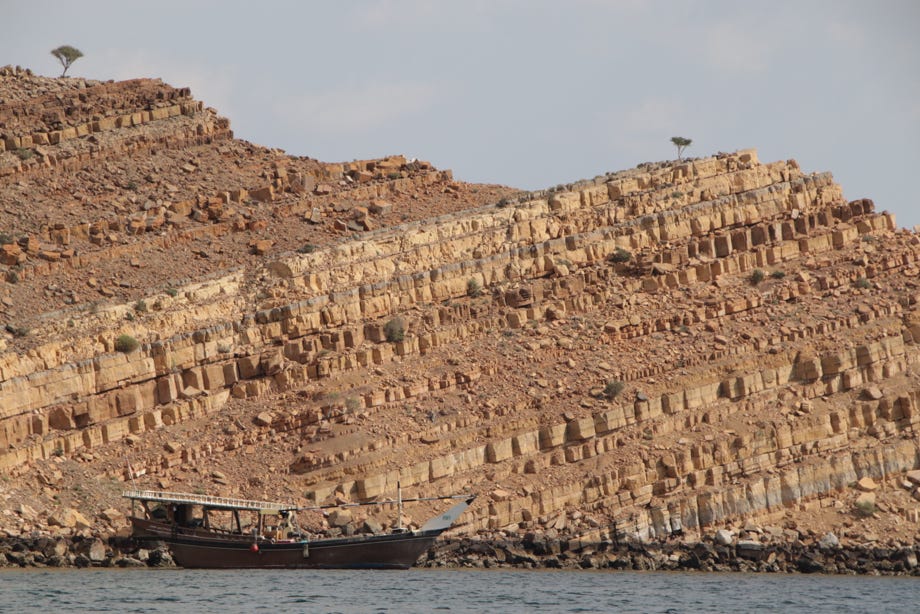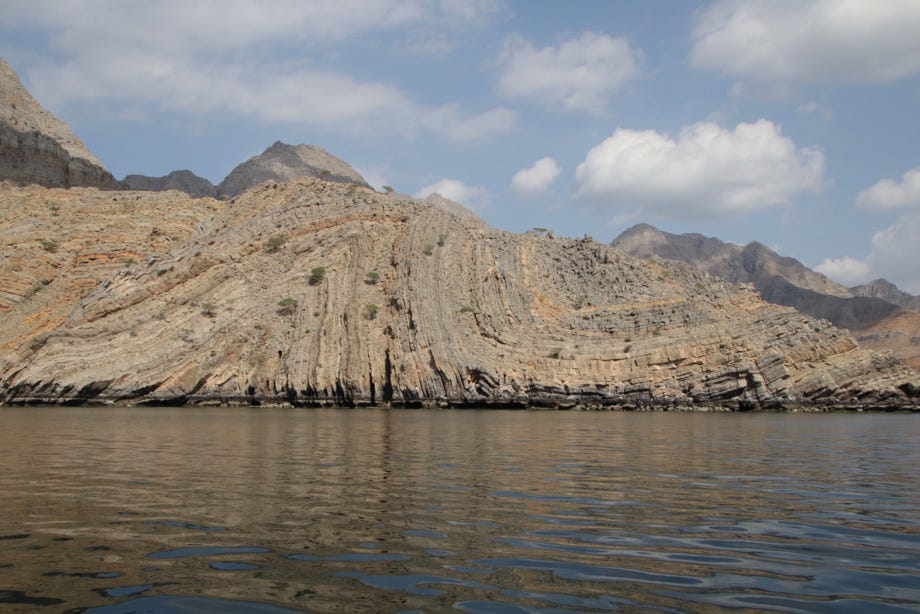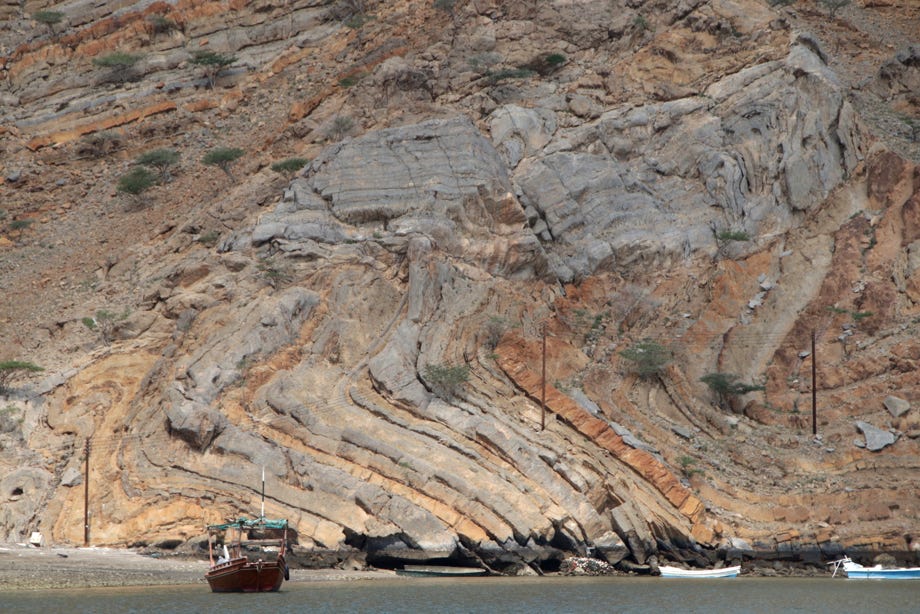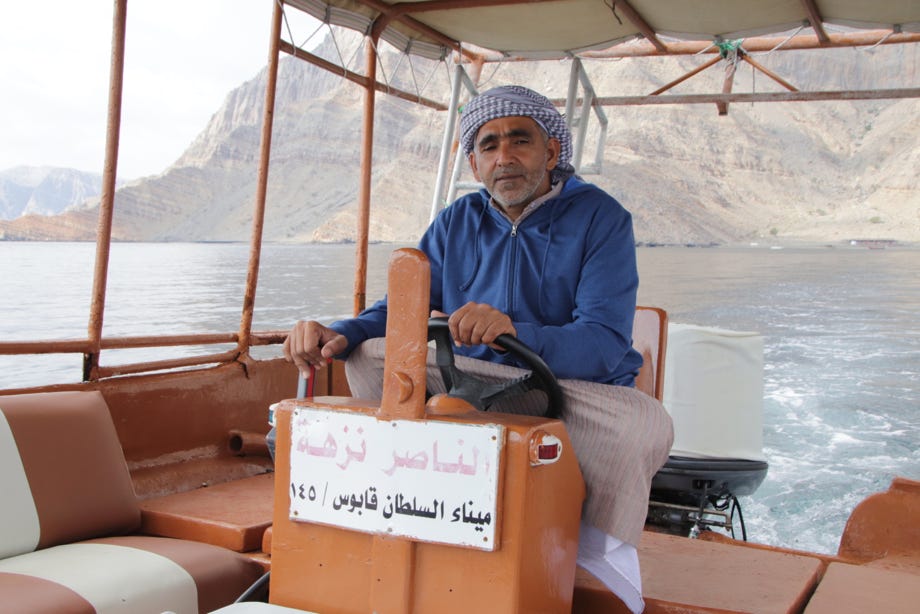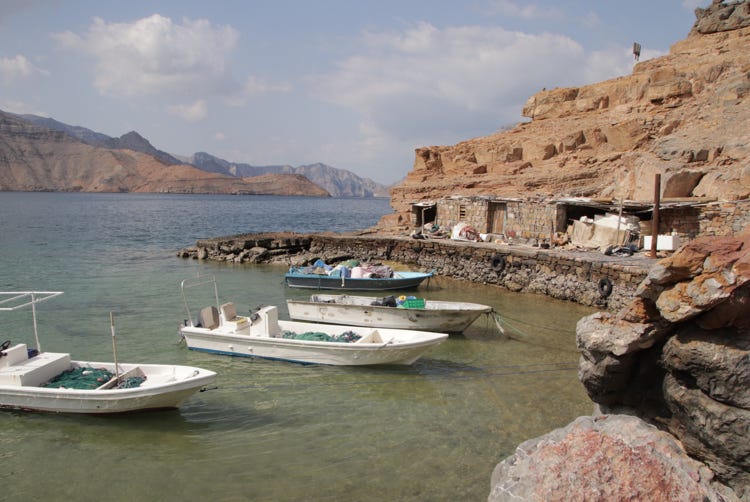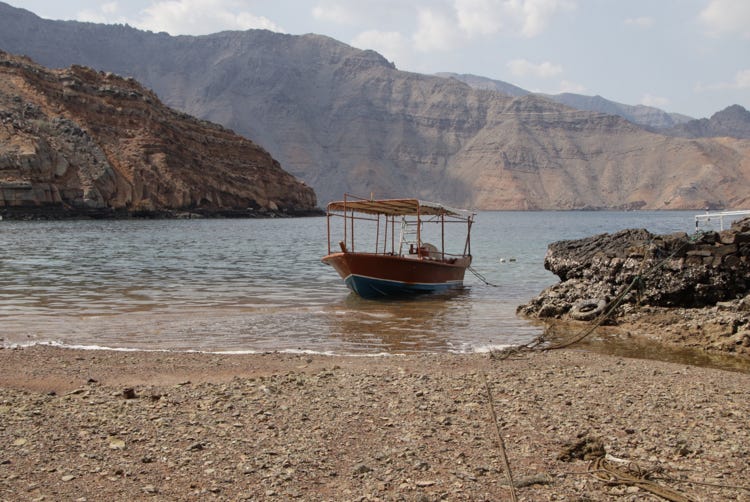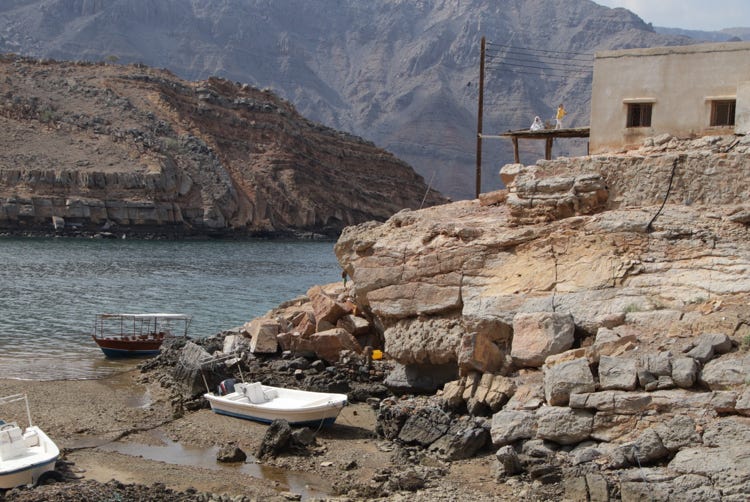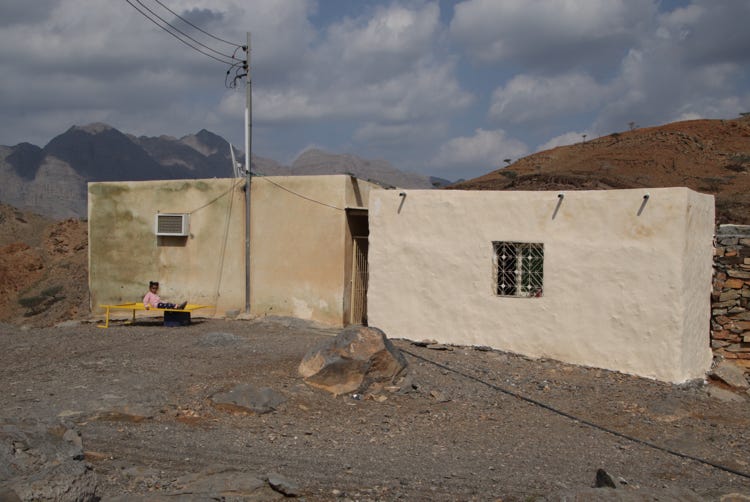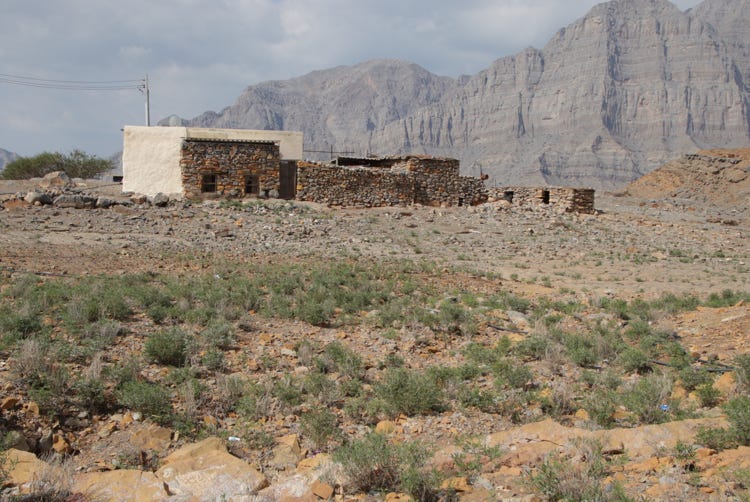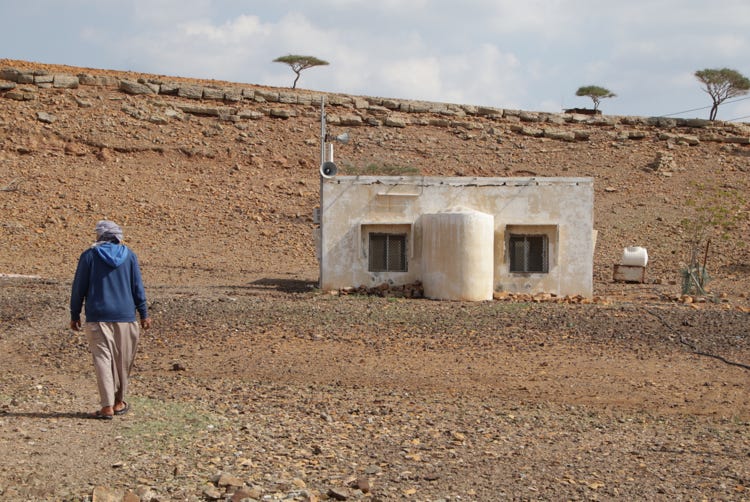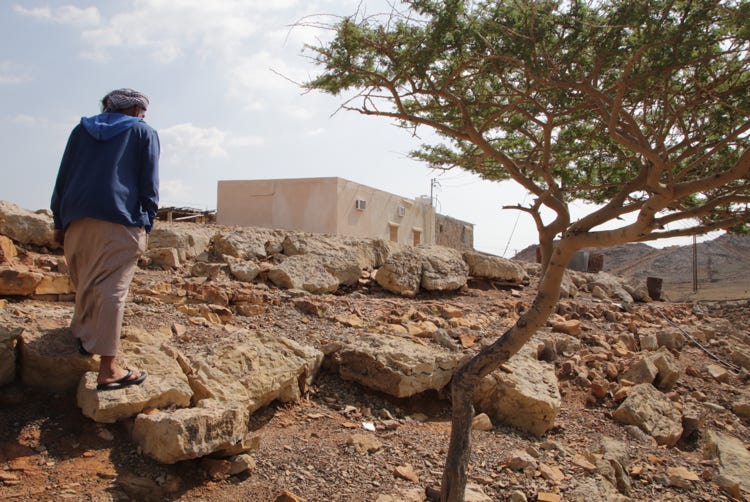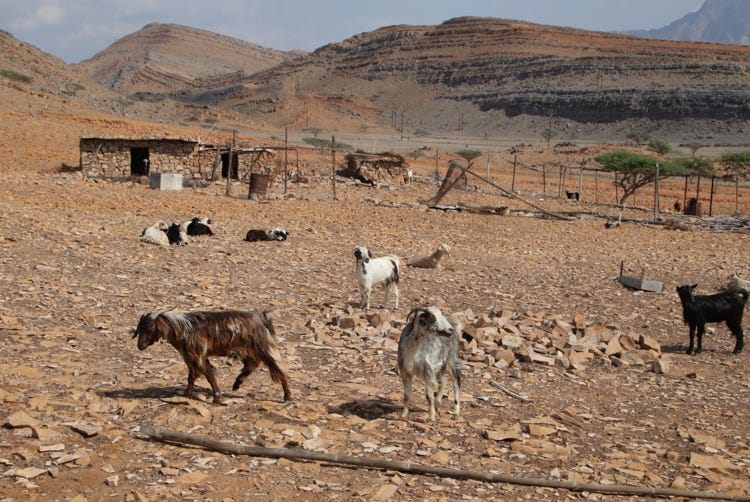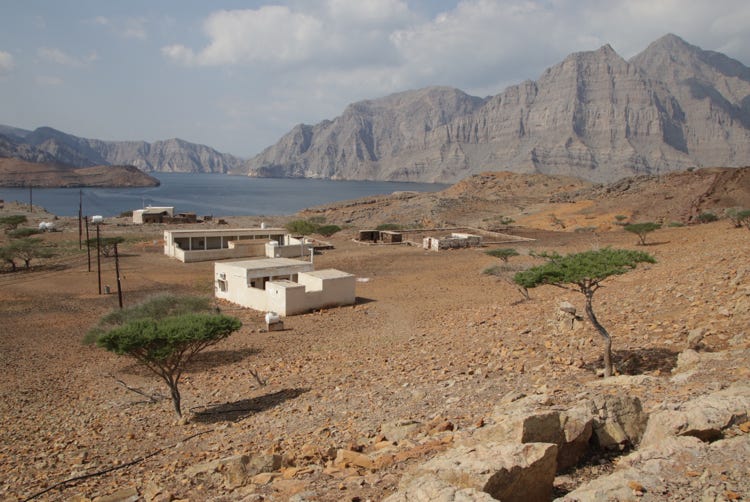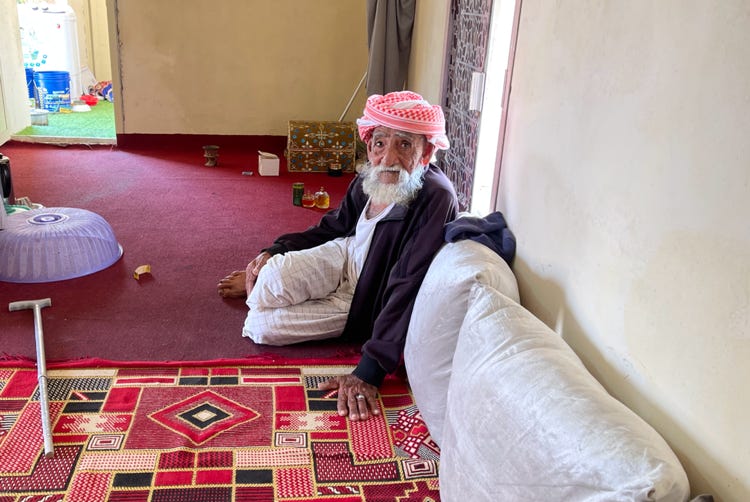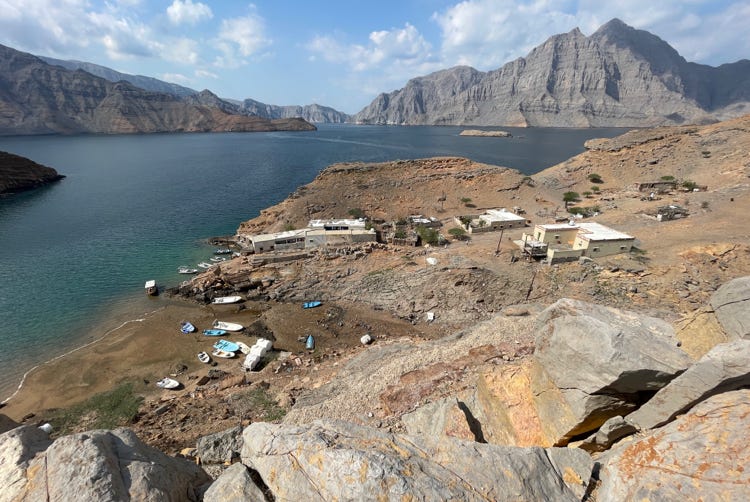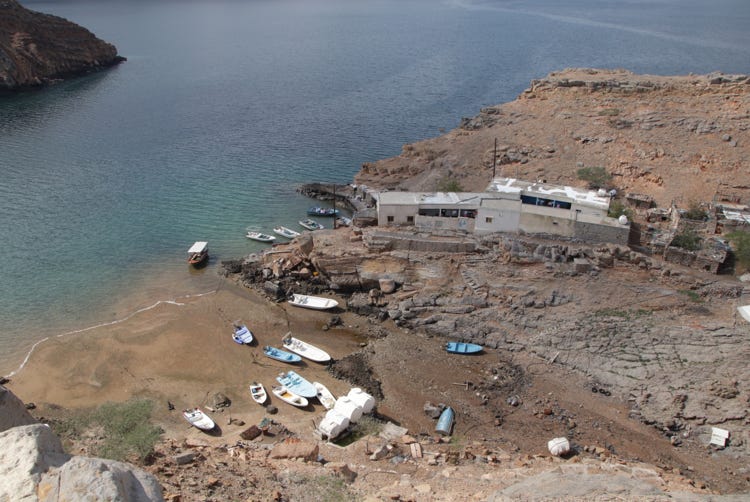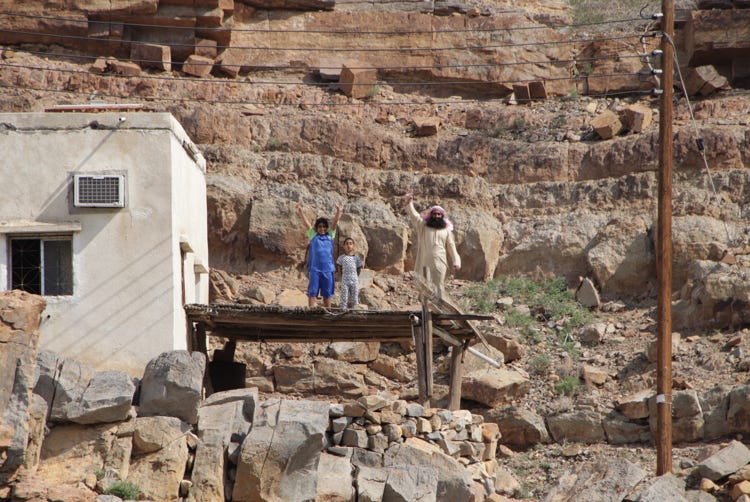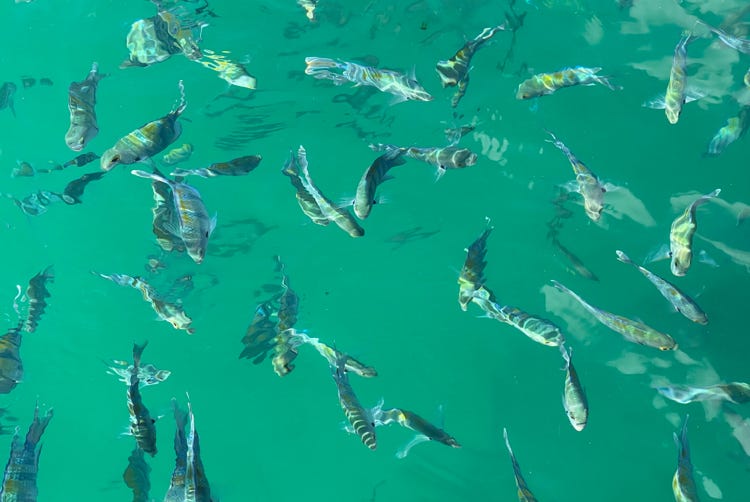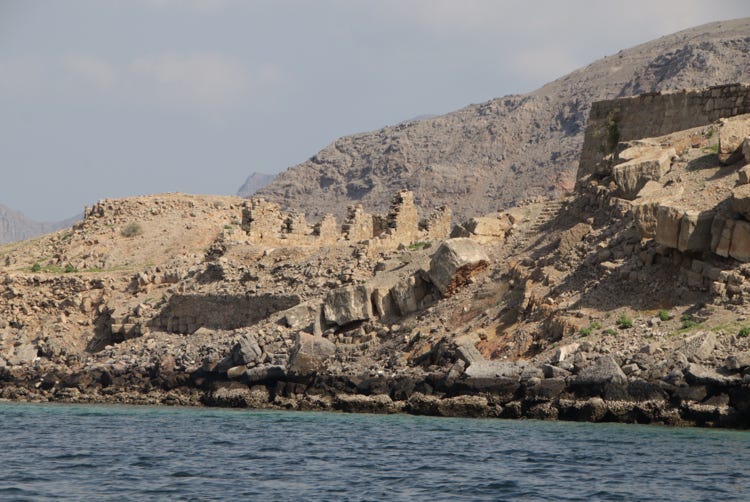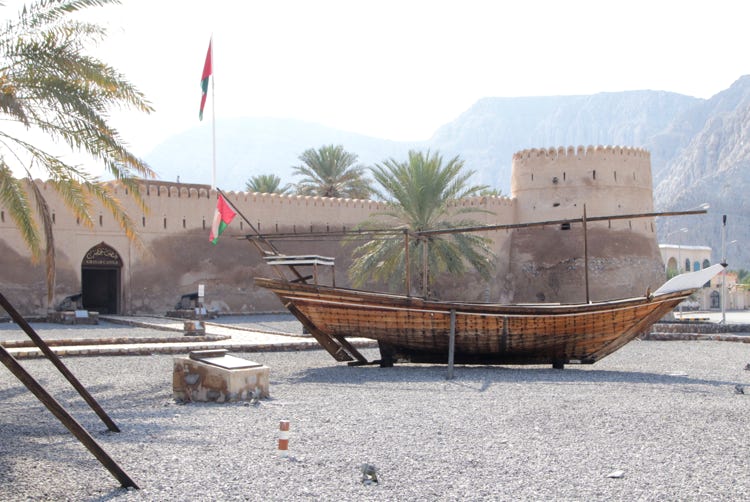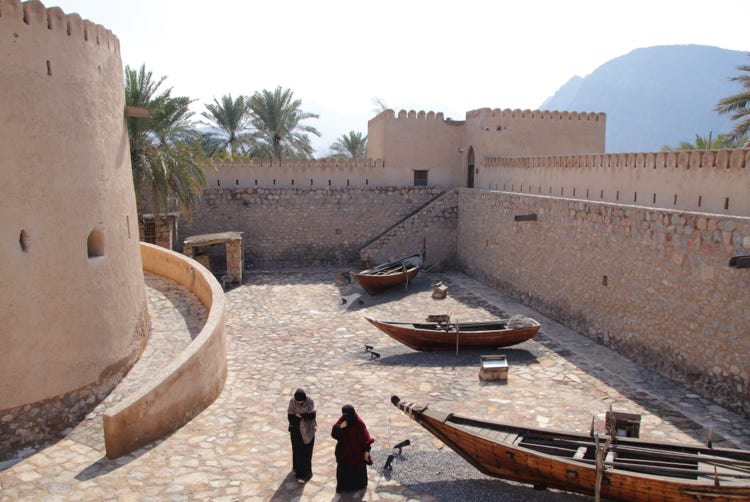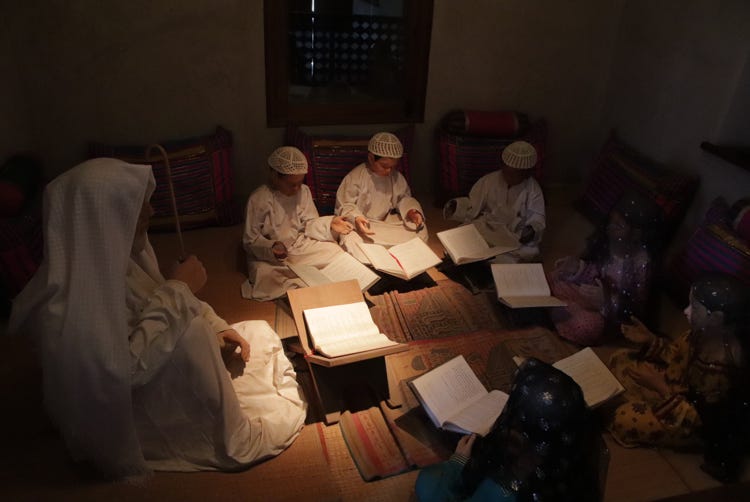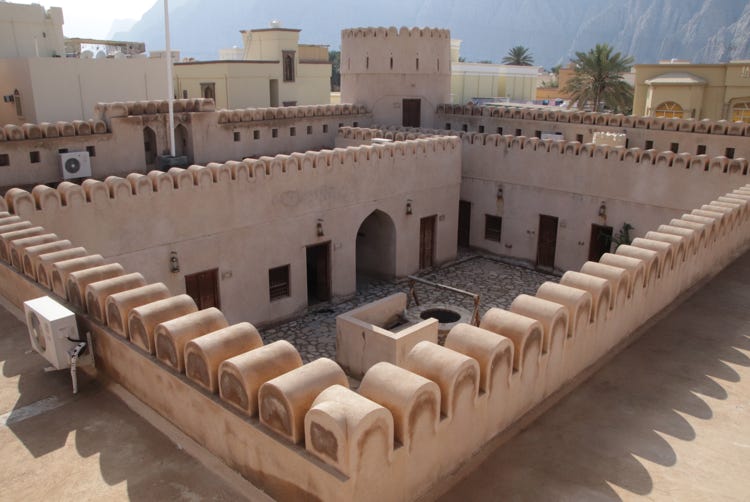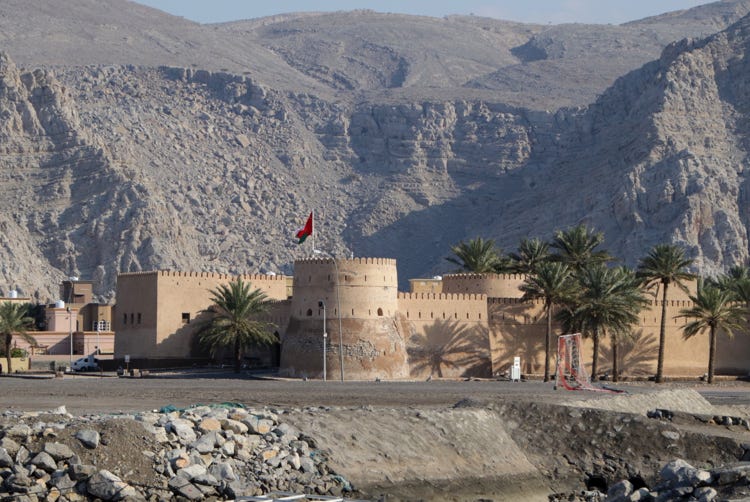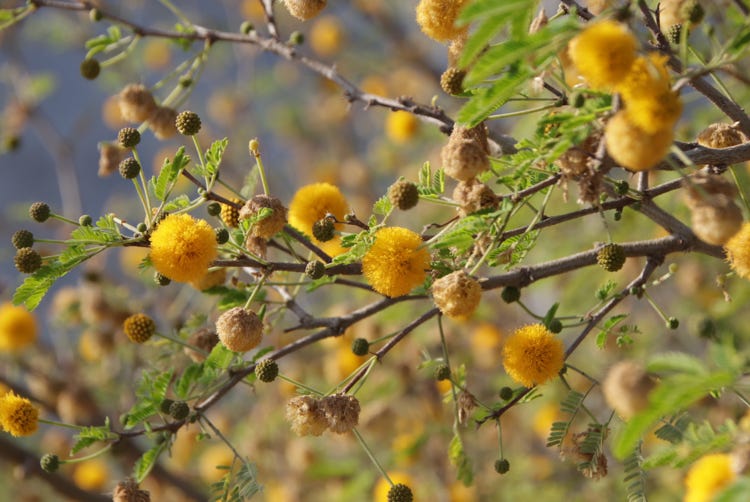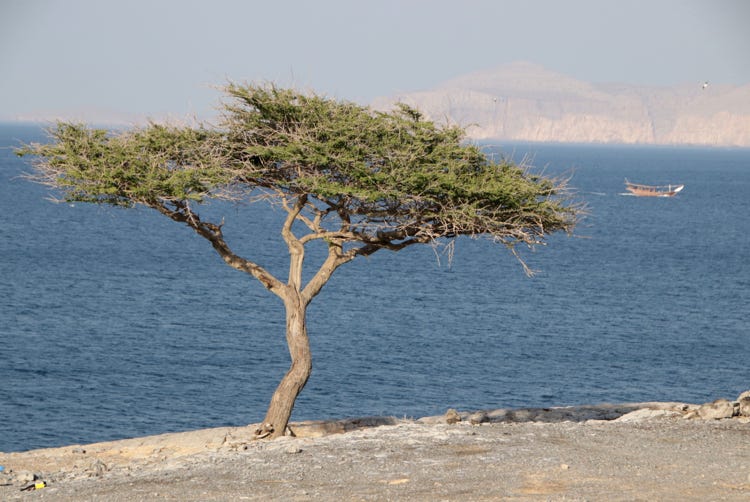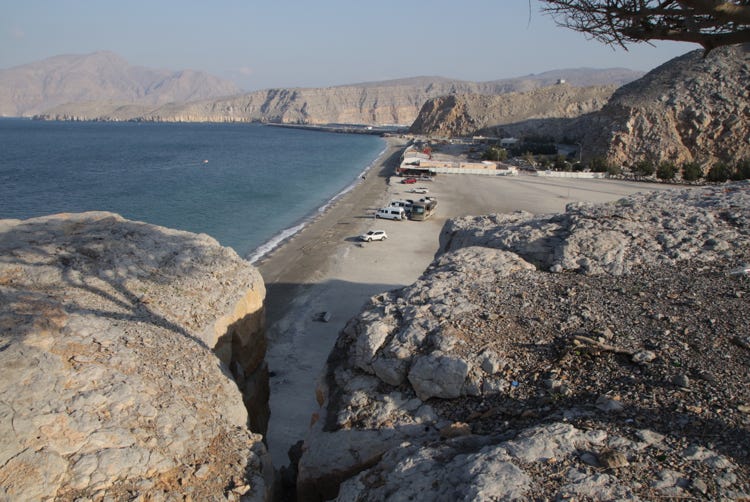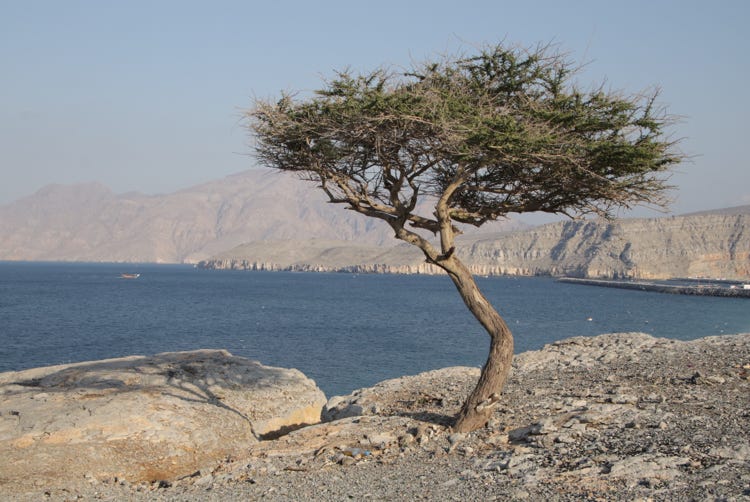My experiences in Oman just seem to get better and better. I took 450 photos today and I wish I could share every one of them here.
The day began quite early as I had a Zoom call scheduled with one of the PhD students I am supervising. That call went well, and I was well and truly ready for breakfast when it finished. Overall, the breakfast was satisfactory rather than brilliant, although the home-made marmalade jam was a genuine highlight.
One of the so-called “must-dos” in the Musandam region is taking a boat trip through one of the khors. Khors are deep, steeply sided coastal inlets that local people liken to fjords; indeed, the Musandam region is sometimes referred to as “Oman’s Norway”.
Most people who go on these boat trips do so in a group tour on a dhow (traditional wooden vessel) adapted for tourism for a full day that includes lunch, swimming, and snorkelling. I wasn’t especially interested in any of these ‘extras’; I just wanted to see as much coastal scenery as possible without life-threatening experiences such as snorkelling. When I checked into my hotel yesterday, I discussed my preferences with the hotel staff, and they very helpfully assisted me in organising a private trip on a small speedboat.
My driver arrived right on schedule at 10:00am to take me to the port area In Khasab, although it was about 10:40am before we left the wharf. Our trip did a wonderful circuit of one of the largest khors near Khasab, Khor ash Sham. I was actually able to track our path and record it by ‘telling’ my watch that I was starting an outdoor cycling workout. The trip around Khor as Sham took a total of just over 30 kilometres, divided into two parts. (In the satellite photo, the left side shows part 1, starting in Khasab (green dot) and finishing in Maqlab (red dot), while the return from Maqlab to Khasab is on the right side).
The first part of the trip travelled east from Khasab before entering Khor ash Sham, staying fairly close to the northern side of the khor most of the time. Although there were some patchy clouds, the sun shone most of the time, illuminating the spectacularly tilted and folded limestone formations to perfection. My driver (the same man who had collected me in his car from the hotel) spoke almost no English, but he had the vocabulary to describe two important features in the rocks – “fish’s head” and “moustache” – plus a third word, “dolphin”, to explain why we were spending a long time circling in one area for about 15 minutes. Dolphins are often found in that area, and although a tiny white surface splash at one point may have been caused by a shallow dolphin, no dolphins revealed themselves.
An hour and a half into our trip, having travelled (but not really cycled) 17.2 kilometres, we pulled into a small inlet within the khor. Our destination was a tiny farming hamlet named Maqlab. We tied the boat to some rocks, there being no wharf, walked across a small beach and started ascending some roughly made concrete steps. After a few minutes we reached an elevated, slightly undulating area. We walked past several houses, then up another gentle rise, past a small herd of goats grazing on nothing but sharp rocks to one of the houses. My driver gestured to let me know it was his own home and he wanted to invite me inside.
This was an unexpected bonus, and a lovely example of traditional Arab hospitality for the traveller. Although lunch was not part of the arrangement, he had decided to invite me into his home for a small meal anyway. He introduced me to his 70 year old father who was sitting on the floor, gave me a seat and proceeded to bring a bowl with the lunch that had been prepared.
Lunch was a simple, fresh, healthy food comprising flat (very flat) bread baked in the house, supplemented by home-made yogurt for dipping the bread, plus a quarter of an orange, a third of a banana and three dates, finished off by two cups of Omani coffee. I have developed a taste for Omani coffee, which is quite distinctive. Drunk from tiny cups without handles, it is fairly strong, consumed black, has a slightly dusty aroma and a taste that is spiced up aromatically with a mix that includes saffron, rose water, cardamon, cloves and cinnamon. I find it leaves the top of the tongue slightly numb after drinking it.
Despite some valiant efforts, conversation was impossible. The driver’s father was completely deaf, and the driver spoke almost no English. At one stage to make conversation, I pointed outside to the goats and asked him how many goats he had. He didn’t understand, so I simplified it by saying “goats – how many?”. His face lit up and he responded “Three. Father. Me. Brother”.
With both the conversation and the lunch complete, we returned to the boat, taking a slight diversion to have a spectacular view of the lower part of Maqlab and Khor ash Sham beyond. In the middle of the khor was a small island known as Telegraph Island, named because the telegraph-cable repeater station built on the island in 1864 was a critically important component of the pioneering London to Karachi telegraph cable.
Today, Telegraph Island is deserted, but the ruins of the buildings used at the time remain. By sign language I deduced that if the tide had been lower we could have landed and walked there, but the waters were too high for that to be possible. Therefore, we circled around the northern side of the island before proceeding on our 13.3 kilometre trip back to Khasab, a voyage that took 45 minutes.
Upon our return to Khasab, the driver tied up the boat and then offered to drive me back to my hotel. I chose instead to be driven only as far as Khasab as I wanted to see two of Khasab’s top sites (some would say its only sites), Khasab Castle (sometimes called Khasab Fort) and the Al Kamazerah Castle.
Khasab Castle was built by the Portuguese in the early 1600s to control the strategically important Strait of Hormuz. However, they didn’t keep it for long because it was captured by the Omanis in 1624, and it has remained under their control ever since then.
With an entrance flanked by two traditional dhows, the Castle was renovated in 2007 and is in excellent condition. Furthermore, the central circular tower and one of the corner towers have been fitted out as excellent, informative displays about Omani culture, geography, history and lifestyle. The courtyard contains three small boats built in traditional style dating from last century as well as a full-size Arish (summer house). Khasab Castle was very good value at just 0.5 rials ($Aust 1.83) – payable only by credit card; no cash accepted.
A short ten minute walk through Khasab’s narrow laneways brought me to Al Kamazerah Castle (free entry here). It seems no-one knows when it was built, but some local people suspect it was in the 17th or 18th century; others say it was the late 19th century. It is considerably smaller than Khasab Castle, and apparently rarely visited because it is so difficult to find. The castle didn’t take long to explore as it is essentially a single central courtyard with two round towers facing each other on diagonally opposite corners. It did, however, have the first toilet I had managed to find since leaving the hotel in the morning, so overall I can say I really enjoyed my visit – very worthwhile.
I finished my visit to Al Kamazerah Castle almost at its closing time (3:30pm). Having left my rental car at the hotel in the morning, I decided to walk back to the hotel rather than get a taxi; the 4.5 kilometre walk was really enjoyable in the light afternoon breeze and I took the chance to zig-zag a little and get some nice photos.
